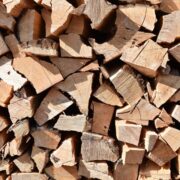Are you planning to build a fence around your farm and wondering how to go about it? Then keep reading. Let’s first have a look at the materials you will need before we dive into the process of building the fence. The list is as follows:
- Heavy Leather Gloves
- Hammer
- Shovel
- Post Hole Digger
- Wire Cutters
- Crimping Tool
- Fence Tensioner
- Fence Pliers
- Small Chain Saw
- Sledgehammer
Invest in materials of good quality; ensure they are durable. Next, let’s look at the steps that go into building a high-tensile wire fence:
Figuring Out the Fence Line
The first step is to plan out your fence line properly. You will need to consider the property lines well for this. If possible, avoid rough, stony, broken, and steep areas. It is recommended to level up the ground beforehand. Dig the pebbles and rocks out with the help of a shovel. After this is done, plant grass seed in that area to help with the prevention of erosion or weed growth.
Selecting the Fencing Material
There are various types of wires available for fencing.
Woven Wire
These are made up of numerous smooth horizontal wires. They are kept separated with the help of stays, i.e. vertical wires. There are many options available in terms of height.
Mesh Wires
These are some of the most durable kinds of wires. Not to mention, cheaper than the woven wires, too.
Barbed Wire
These are made up of galvanized steel wires. The strands of steel are twisted together to form barbs. They are inexpensive, too.
Electric Fences
Electric fences are another option you can consider for both temporary and permanent purposes. The wires are made up of steel or aluminum and have high tenacity. Moreover, they are inexpensive.
Building Posts
A high-tensile wiring on the fence will put a pull on the corner and end posts. For the same reason, both the posts need to be installed concretely.
Some options for building a fence without digging post holes are given below:
- Fill large or medium-sized buckets or pots with cement and place the posts in them. After the cement dries up, the posts will become a solid support for the fence.
- Drivable Post Support Anchors – These are spikes made up of galvanized metal. You can fixate them in the ground with the help of a sledgehammer. Once the spikes are embedded well in the ground, you can slide in the posts. The posts are held in place with the anchors with the help of screws or glue.
Running The Wires
The most important factor to consider in this task is the tautness of the wires. While walking the wire from one corner post to the first one, ensure that the wire is not slack at any place. Secure the wires tightly on all the posts. You can staple the wire on the wooden posts. While stapling the wire on the posts, rotate the staple by 25 degrees from the flat side of the posts as shown in the figure below.
Maintenance of The Fence
- Always ensure that the wires are taut in all places. If slackened, you can tighten them by putting kinks or creases in the wire with the help of pliers and a hammer. In case of broken wires, knit them together to create tautness.
- In case of weakening of posts, replace them immediately.
- The area around the fence should have grass with the bare minimum height. If it touches the fence, it will be futile in curbing livestock. You can use herbicides to keep the weed away from the wire.
Ensure that you have proper hand and eye protection while building the fence.
Save this article for when you decide to build a fence on your farm.










Comments